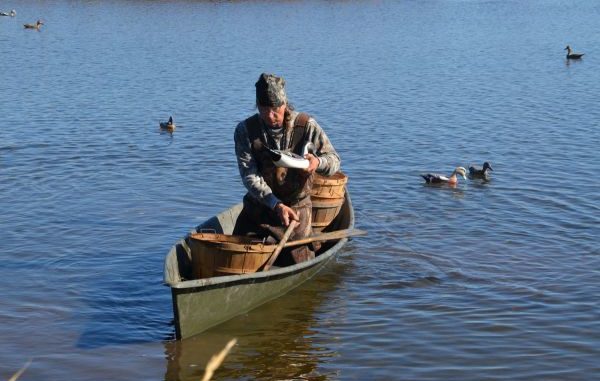
Cal Kingsmill and Ray Bellant are dedicated duck hunters, but they come from widely different backgrounds so they offer different perspectives about the reasons to hunt with wooden decoys.
Kingsmill is a born-and-bred New Orleans boy who grew up around expert decoy carvers. Bellant, who now lives in Slidell, grew up in Oregon and hunted with plastic decoys.
Bellant became a U.S. Navy Special Operations helicopter pilot.
“I put Navy SEALS in and out, and did search and rescue,” he said. “It doesn’t get any funner than that!”
In the early 1990s, he was stationed in Louisiana, and a mutual hunter friend who grew up with Kingsmill introduced the two.
“Cal got me started in wooden decoys,” Ballant confessed. “I’ve carved about four dozen. It is thrilling to kill ducks over them.
“I’ve hunted all over the United States, and Louisiana has more people that carve hunting decoys — not decorative decoys — than the rest of the country combined.”
But both men agreed there are pluses and minuses to using wooden rather than plastic decoys.
Pros
• Functionality — “Wooden decoys sit better in the water,” Kingsmill said.
“Also, commercially made decoys all look alike. Carved decoys are all different.” Bellant agreed. “They swim different in wind or water. In wooden decoys, the weights are positioned differently, so they each move differently.”
• Durability — “Wooden decoys are strong and will outlast plastic decoys,” Kingsmill said.
“The paint sure does,” Bellant said.
“The only vulnerable thing is the bill if you are careless when you put them out,” Kingsmill said.
• Heritage — “A wooden decoy has a soul, compared to a stamped-out plastic decoy,” Kingsmill said.
Bellant agreed.
“The spread definitely looks different,” he said,
And the wooden dekes are ties to the history of hunting.
“Decoys originated 2,000 years ago,” Kingsmill said. “When you make your own decoys you are doing something that primitive man did.”
• Extends the season —“Hunting season is too short for most hunters,” Bellant said.
Kingsmill elaborated.
“It makes duck season last 12 months because you are building your own spread all year,” he said.
• Value — While not a primary reason for carving one’s own decoys, both men chuckled about the demand for hunting decoys by collectors.
“I’ll tell you one thing: People want to buy your retired hunting decoys more than newly carved ones,” Bellant said.
Kingsmill explained that working decoys are easily recognizable because they develop a nice patina on the paint.
Cons
• Time — When asked about the disadvantages of carving one’s own decoys, time was the main issue with Kingsmill.
“It takes time to make them,” he explained. “Some people don’t have the patience.”
Time is invested not just in the carving of the decoys, Bellant added.
“It takes longer to put wooden decoys out before the hunt and pick them up after the hunt,” he said.
• Dog damage — It was only natural that Bellant, who always hunts with a retriever brought up dog damage.
“Dogs are hard on wooden decoys — always stepping on them,” he said. “Plastic decoys are in sacks and are somewhat protected. It’s especially tough when training a new dog, one that chews the heads off decoys.”
• Expense — Hunting with wooden decoys is more expensive than hunting with plastic decoys, even if you make your own, Bellant said.
“A wooden block for the body is $20 to $22, and the block for the head is $5,” he explained.
• Weight — “Wooden decoys are heavier than plastic decoys,” Bellant said. “Weight can be an issue for people that have to carry their decoys in to hunt.
“It isn’t an issue the way we hunt, though.”
